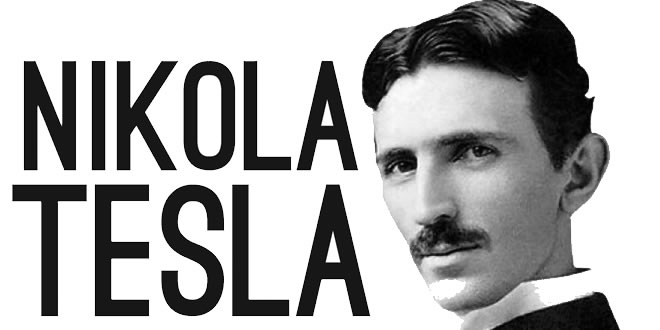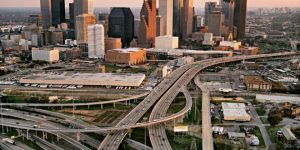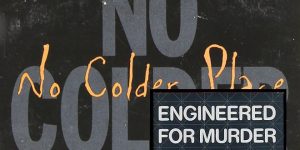The Legacy of Nikola Tesla
Undisputedly one of the world’s most visionary engineers of all time, Nikola Tesla was born on July 1856 in Croatia. His father was a Serbian Orthodox Priest and his mother was an inventor of household appliances. He studied at the Realschule, Karlstadt in 1873, the Polytechnic Institute in Graz, Austria and the University of Prague. His career kicked off when he was hired by a telephone company as an electrical engineer and later immigrated to United States in 1884 to work for Thomas Edison. His childhood dream seemed a step closer – to harness the power of the Niagara Falls. However, it wasn’t long before his relationship with Edison soured and they went on to become bitter rivals. Tesla went on to set up his own lab and he filed for seven US patents in the field of polyphase AC motors and power transmission – a move that would turn out to be the most valuable patents since the telephone. He partnered with another inventor, George Westinghouse and they proceeded to develop the world’s first hydroelectric power plant, at Niagara Falls. He was a pioneer in many fields and his vision included the exploration of solar energy and the power of the sea. He also predicted interplanetary communications and satellites. His work led to advances in wireless communications, lasers, x-rays, radar, lighting, robotics, and much more. Despite his genius, Tesla was often pitted against powerful corporates and government players. He did not receive the recognition he deserved and died a poor man on January 1943. When he passed on, his work was seized by the government though they were later released to his family. To date, some of his papers are still classified by the US government. Some of his popular inventions include:
1. The AC Motor
When Tesla conceived the idea of an AC motor, he envisioned an alternating current fed to stator windings would create poles that reversed themselves without any mechanical aid. This would cause an armature to whirl around in the motor. His invention proved to be both durable and adaptable. Within two years Tesla had patented over twenty useful modifications of his new motor. Today, a somewhat differentiated version of the AC motor powers most of the familiar appliances used in within the household, from refrigerators to coffee grinders.
2. The Tesla Coil
The Tesla coil was an apparatus that pushed the limits of electrical understanding and its design and operation achieved unique results. It used polyphase alternating currents to create a transformer capable of producing very high voltages. In the early decades of radio, most practicable radios utilized Tesla coils in their transmission antennas. Tesla also used different versions of this invention to explore fluorescence, x-rays, radio, wireless power, biological effects, and even the electromagnetic nature of the earth and its atmosphere. In the modern world, this invention is used commonly in electronics and supplies high voltage to the front of television picture tubes.
3. The Radio
Tesla invented circuits that would respond only when a preselected set of frequencies were detected at the same time or in a specific sequence. He patented a radio controlled robot-boat was constructed with an antenna, which transmitted the radio waves coming from Tesla’s lab. The radio waves were received by a radio sensitive device called coherer, which transmitted the radio waves into mechanical movements of the propellers on the boat. Nikola’s invention was the first application of radio waves. However, an inventor named Guglielmo Marconi went on to be named the father of radio and Tesla’s work was ignored. It was not until 1943 that the US Supreme Court deemed Marconi’s patents invalid. Communications security today is founded on the principles that Tesla introduced – the idea of breaking up signals and moving them around in frequency or time.
4. The Remote Control
In 1898, Tesla staged a demonstration at Madison Square using a radio-controlled boat. Radio signals controlled the switches, which energized the boat’s propeller, rudder and scaled-down running light. He was able to send signals to the boat using a box that had a lever and a telegraph key which shifted electrical contacts aboard the boat. This would then lead to an adjustment in the settings for the rudder and propeller, allowing the operator to control the boat’s motion. Tesla’s invention was targeted towards the US Navy who did not think it would help them in war though they did go on to finance trials started by one of Tesla’s competitors. His invention did pave way for the launch of the Space Age and the orbiting of myriad commercial and military satellites, all which use remote control.
5. Improved lighting
The first practical phosphorescent lamp was created by Tesla. His early lighting inventions worked as conventional filament or arc devices but as he went on making improvements, he managed to create a more powerful apparatus. By 1890 he was able to generate fields that would light up – without any wires – phosphorescent tubes across his laboratory. His first demonstrations of wireless power left his peers in great awe. He also managed to create man-made lightning through an invention called the Magnifying Transmitter that could produce incredible electrical flashes measuring up to 41 meters. Unfortunately, the structure was later destroyed to pay off debts.
Nikola Tesla was one of the most revolutionary inventors that the world will ever see. Despite his groundbreaking innovations, he fell under the shadow of his rivals such as Edison and Marconi. Regarded as an eccentric scientist and often ridiculed by his contemporaries, Tesla was a genius ahead of his time. His technological advancements transformed not only America but the rest of the world. The importance of his contributions is widely recognized today and there is a rock band as well as an electric car company named after him. Tesla’s legacy transcends his vision and brilliant achievements in the engineering field. He also serves as an inspiration to those who work hard and receive little recognition for their efforts.



